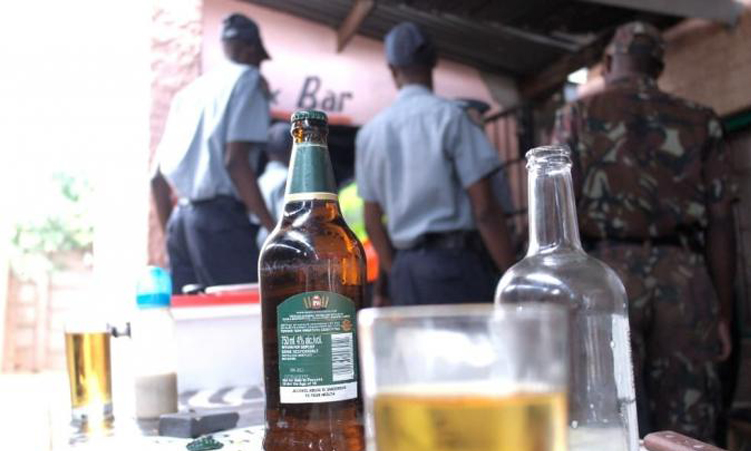MURRUMBATEMAN – From a picturesque hill overlooking the hazy distant foothills of Australia’s eastern ranges, Bruce March can see a crisis facing the country’s A$2,4 billion (US$1,6 billion) wine export industry with crushing clarity.
March, chief winemaker at Doonkuna Winery, in prize cool climate vine country north of Canberra, had been looking forward to a bumper 2009 harvest, tripling production capacity last year in anticipation of rocketing China demand for his wine.
But the global financial crisis has exploded that interest, bringing with it a soul-searching for Australia’s vignerons, ironically when good rains and a late summer are set to bring one of the best harvests for years.
‘We set up to produce all this wine. We spent a lot of money, and then bang, the financial crisis hit us,’ March told Reuters, standing near his largely new winemaking plant. Our Chinese importer is hoping for a better next year. Right now we’re tightening belts and we’re into survival mode’.
The latest export figures are depressing reading for Australia’s wine industry, which for decades led the so-called ‘New World’ challenge to wine’s traditional French, German and Italian strongholds.
Australia shipped 11 per cent less wine by volume and a whopping 18 per cent less by value in 2008, delivering the first setback for 15 years, according to government marketing agency the Australian Wine and Brandy Corporation, or AWBC. The average litre value of wine sold dropped 7,6 per cent to A$3,53.
In key British markets, total value slumped 18 per cent, while in the United States exports fell over a cliff, slumping 26 per cent. Rare bright spots included China, which imported 32 per cent more Australian wine by value, off a low base, as well as Hong Kong (up 17 per cent) and Japan up 4,1 percent.
SUNSHINE IN A BOTTLE?
A few hills distant from Doonkuna, Tim Kirk now sees a reckoning facing the industry in the wake of what even optimistic marketers admit has been an extremely disappointing year.
‘We have had massive success with an approach of good wine, good price, cheap and cheerful, sunshine in a bottle. But in some respects that’s been the seeds of our undoing,’ Kirk says.
Kirk’s Clonakilla winery sits at the boutique end of Australia’s wine market and his reds, in particular an award-winning shiraz-viognier, have won international acclaim.
But Kirk, a thoughtful second-generation winemaker, says Australia has been complacent, believing ground-breaking, cutting-edge production methods developed by the country have seen New World wine supplant the Old.
Quality is there, he says, but the problem – magnified by recession gloom – is a tradition of marketing overseas based on low price, rather than the critical story of Australia’s wines.
‘Rather than compete on good wine, great price, we need to focus on regionality, on great wine at maybe a good price,’ says Kirk, whose father began Clonakilla in 1971.
Since then Western Australia’s Margaret River has become one of the world’s great cabernet regions, while South Australia’s Clare Valley turns out world beating Reisling. Canberra’s continental climate rivals Rhone reds, Kirk says.
‘The quality is a given, we need to develop the excitement,’ he says. ‘We have ancient soils, every bit capable of standing shoulder-to-shoulder with the great wines of Europe. Australia needs to grow up. h
INCONVENIENT TRUTH
Industry heavyweights recognise the problem, which has gained urgency following the export decline and as last year’s credit crunch spreads shockwaves among major economies, with Germany, the United States, Japan and the UK in recession.
A turbulent run for the Australian dollar, which neared US dollar parity last year before a dramatic depreciation, underscores Australia’s need for a strategy other than competing with low-wage rivals in Chile, Argentina and South Africa.
‘We got caught in a tailspin of tactical responses to apparent opportunities in (the) market which were usually promotion-driven,’ says Paul Henry, General Manager of Market Development for the AWBC.
Australia exported 62 per cent of its wine in 2008 and in some markets the percentage sold on promotion was above 80 per cent as the country looked to repeat 2007’s A$3 billion export high milestone. The average for France is around 40 per cent.
The industry is by some estimates 20 per cent too large with many newcomers having entered expecting an export bonanza.
That has harmed the image of Australia’s overall wine brand, Henry says, making it synonymous with low price in key markets such as Britain, and some parts of North America.
‘The real inconvenient truth for Australia is that we are not the best placed in the world to compete on volume or price alone,’ he says.
‘There’s a stark realisation to come to, which is that our immediate future is going to look very different to our recent past, in which our ability to produce large volumes of compellingly branded c easy-drinking wine at a price was dominant and exclusive.’ – Nampa-Reuters
Stay informed with The Namibian – your source for credible journalism. Get in-depth reporting and opinions for
only N$85 a month. Invest in journalism, invest in democracy –
Subscribe Now!






